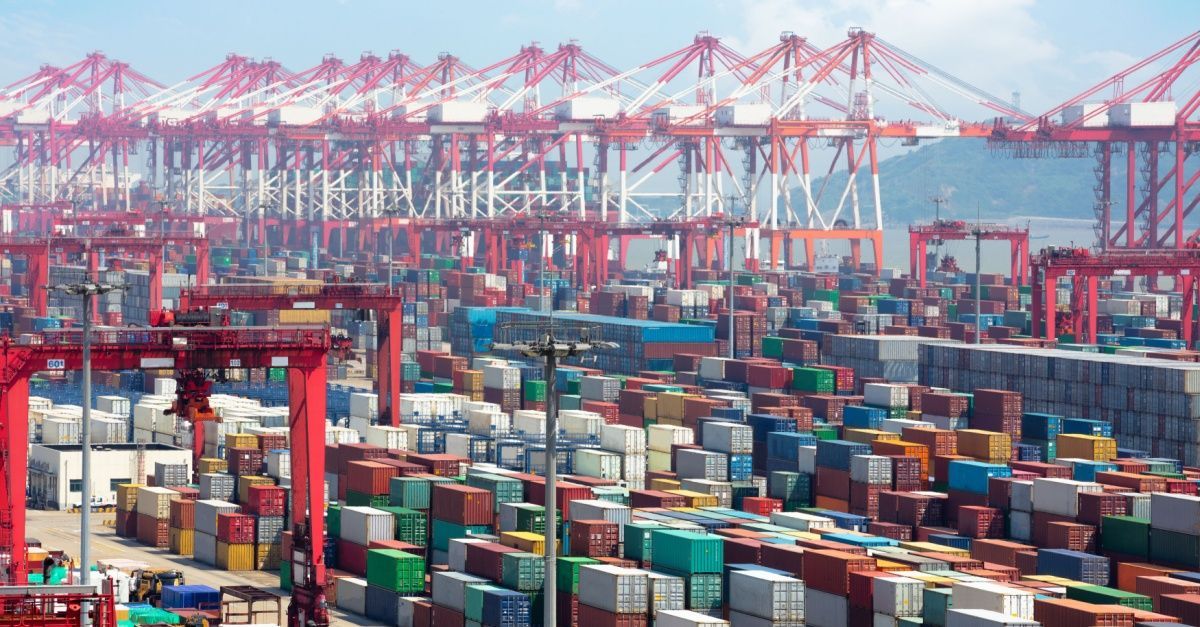Freight Flows Across Borders and Oceans
Blog Post CTA
Odds are, something in your vicinity right now has a “Made in China” tag on it. Globalization has significantly increased the trade flows and supply chains between the U.S. and China. In fact, the U.S. imported $536.3 billion worth of goods from China in 2022.
E-commerce is only growing the global nature of supply chains and the flow of trade around the world. Cargo continues to move by air and sea, and companies are investing to ensure they have the tools in place to ensure a smooth transport of goods.
Here are six headlines to keep tabs on trade routes and relationships, along with other supply chain and logistics industry news:
China’s E-commerce Spree Boosts Airfreight
This isn’t typically the busiest time of year for air cargo. April and May tend to be slower months outside of the peak shopping and holiday seasons in the fall. But a handful of factors are boosting demand for airfreight.
One of those factors,
according to Freightwaves, is the continued growth of e-commerce players in China. Online marketplaces, such as Temu and Alibaba, are “sucking up outbound capacity from China,” the publication wrote. The rapidly growing fast fashion
retailer Shein is also playing a role in air cargo capacity coming out of China.
These marketplaces haven’t always shipped by air. In the recent past, goods traveling to Europe and North America were shipped by ocean and then stored in warehouses. But now,
e-commerce accounts for about half of the air cargo coming out of South China and Hong Kong, adding more volume to airfreight.
Another factor boosting airfreight is the continued attacks and piracy in the Red Sea. Many ocean carriers are avoiding the region, but bypassing the Red Sea can add 10 days or more to transit times. Some shippers with time-sensitive goods or that want more predictable supply chains are using airfreight for faster transit.
All told, airfreight volume in March increased 11% YOY, per Xeneta, a rate benchmarking platform. Flight activity in global air cargo went up 6.8% in March, compared to 2023.
“The level of demand in the first quarter doesn’t indicate a market which is running out of steam so far,” said Niall van de Wouw, Xeneta’s Chief Airfreight Officer.
Cargo Moves In and Out of West Coast Ports
The switch by some shippers to airfreight hasn’t dented ocean freight volumes coming into the Port of Los Angeles. Quite the opposite, in fact.
Cargo volumes at the port grew 19% YOY in March. According to
Supply Chain Dive, that was the eighth consecutive month of YOY growth. The cargo is broken down into imports and exports. Imports were up 19% YOY, and exports were up 47% in March compared to March 2023. Exports were the highest they’ve been since January 2020.
The high export numbers are helping the Port of LA reach a key goal. The seaport wants to boost American exports and get closer to a ratio of two imports for every export. In 2021, the port faced an imbalance, with 6.2 imports to each export.
The port’s executive director expects “robust cargo flow” to continue throughout Q2, due to a strong job market and consumer spending.
Tax the Canned Food Imports
As goods flow across the Transpacific from China to the U.S., some efforts are being made to tamp down on certain exports and imports. This month,
Packaging Dive reported that President Joe Biden called on the U.S. Trade Representative to consider tripling the tariff rate on imports of steel and aluminum from China.
Higher tariffs would increase the duties for U.S. companies buying items such as
canned fruits and vegetables from China. The higher rates could dissuade businesses from importing from China and incentivize them instead to purchase from U.S. manufacturers. Canned food imports from China increased 19% from 2021 to 2022.
Some lobbying groups, however, say Biden’s call to triple tariffs doesn’t go far enough. The Can Manufacturers Institute wants an even higher rate to protect the U.S. metal can industry.
The group’s president called the tariffs “meager” and said Biden “needs to take action now to save U.S. union jobs in the metal can and canned food industry.”
Freight Flows With the Largest Trading Partner
In another important trade relationship, the U.S. and Mexico are working to make sure goods flow between the two countries. After all, Mexico is the United States’ largest trading partner; the former nation did $800 billion in trade with the U.S. last year.
Freightwaves reported on Redwood Logistics’ inaugural Cross-Border Logistics Council event. During that meeting, experts said both countries need to zero in on infrastructure, technology, policies and cargo security.
A good deal of infrastructure investment is going toward highways that connect the border crossing at Laredo, Texas. Dollars are also being poured into the construction of
new warehouses and trucking facilities in the border city. As Jordan Dewart, president of Redwood Mexico, put it: “You can see the dust clouds from 50 miles away from all construction.”
Experts at the Logistics Council event noted that Mexico faces a shortage of drivers, another factor that needs to be resolved to maintain a smooth flow of goods across the border. About 56,000 truck driver jobs are currently open in Mexico. The country’s Trucking Chamber of Commerce is working to promote truck driving and logistics jobs, especially for women, who are significantly underrepresented in the industry. Fewer than 5,000 women work in trucking jobs in Mexico.
Bringing Workers into Logistics
Mexico isn’t the only place facing a dearth of workers. An opinion piece penned in The Tennessean said the state’s supply chain industry is booming, but it’s missing sufficient workers.
Tennessee is home to several supply chain and logistics hubs. Most notably, FedEx is headquartered in the state, creating tons of jobs and the busiest cargo airport in North America.
Nationwide, logistician jobs are expected to grow by 28%, while
supply chain operations and supply chain management jobs are estimated to grow by 11% over the next eight years. The question is whether labor availability will grow enough to meet the forecasted surge in job openings.
The opinion piece writers called on the higher-ed community to offer more degrees in supply chain management and for employers to offer training and tuition reimbursement.
Trucking Sales Remain Weak
Jobs may be growing, but trucking prices are not enjoying the same level of thriving.
Ryder recently published its quarterly earnings. In that report, it revealed average prices for a used tractor dropped 34% YOY in the first quarter. From last year’s Q4 to this year’s Q1, used truck prices fell between 3% and 4%,
Freightwaves reported.
Volume was down, too. Used truck sales (which include Class 8 tractors and other vehicles) decreased 30% year over year in Q1.
The main reason, according to Ryder’s CEO: The market has an oversupply of trucks available for rent. But he’s optimistic and does expect some recovery in the second half of this year.
Keep the Freight Flowing with Entourage Freight Solutions
Whether you’re moving freight across oceans or across state lines, you want a well-oiled supply chain that keeps goods flowing smoothly. Entourage Freight Solutions provides steady services that can help you navigate an ever-changing logistics environment and receive important information in real time. Entourage Freight Solutions offers the following services, and many more:
- Our LTL service provides on-demand access to capacity, along with real-time data and peace of mind in this high-stakes world.
- Our Freight Management lets your team stay organized across inbound and outbound logistics, tracking market capacity and using automation notifications to keep everyone informed.
- Our Refrigerated transport provides expertise in everything from finished goods to raw materials, ensuring products arrive on time and in top condition.
Request a quote today to see how Entourage Freight Solutions can solve your key logistics pain points.









